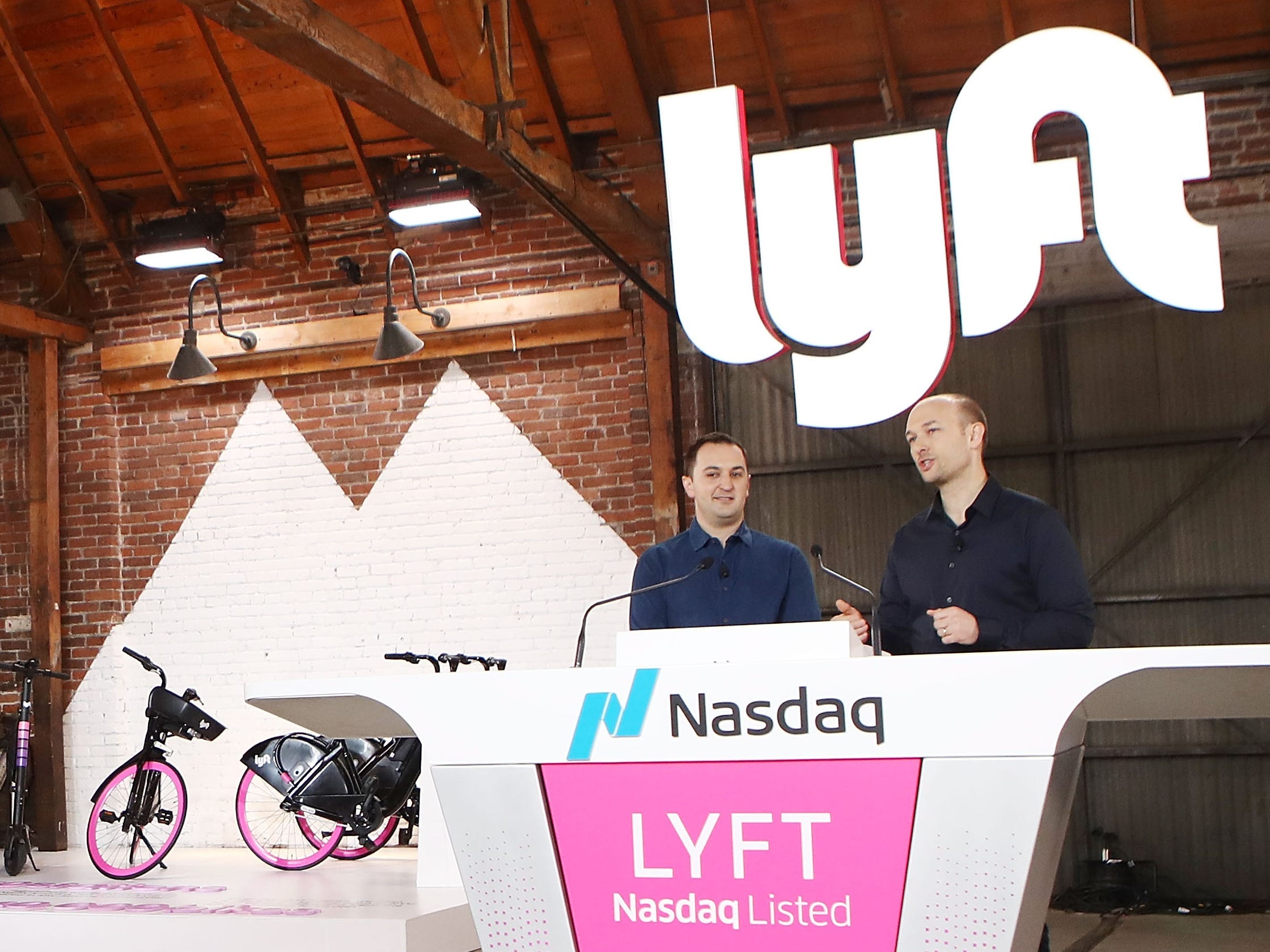
Mario Tama/Getty Images
- Lyft on Tuesday reported $569.9 million in Q4 revenue, beating expectations of $562.49 million.
- Lyft reported GAAP losses per share of $0.58, beating analyst expectations of $0.72.
- Lyft’s valuation has returned to pre-pandemic levels despite its inability to turn a profit.
- Visit the Business section of Insider for more stories.
Lyft on Tuesday reported that its losses narrowed in the fourth quarter, but it beat Wall Street’s expectations as the ride-hailing company continues to struggle amid the pandemic.
The company generated $569.9 million in revenue in Q4 2020, down 44% year-on-year.
Lyft, which is almost entirely dependent on its ridesharing business, has been among the hardest-hit gig economy companies during the pandemic. Still, the company’s stock has rebounded to pre-pandemic levels in recent months as rides saw a slight recovery in Q3 2020.
Here are the key numbers, as well as what Wall Street was expecting. Estimates are based on Yahoo Finance consensus data.
- Revenue: $569.9 million, down 44% year-on-year ($562.49 million expected)
- Loss Per Share (GAAP): $0.58 ($0.72 expected)
- Net loss: $458.2 million
- Active riders: 12.6 million, down 45.2%
- Revenue per active rider: $45.40, up 2.3%
Ride-hailing companies like Lyft and Uber saw earnings plummet in 2020 as COVID-19 lockdowns curbed travel for most of the year.
After reporting revenue $1.02 billion in GAAP revenues for Q4 2019, Lyft's revenue declined to $955.7 million in Q1 2020 and $339.3 million in Q2 2020. Lyft bounced back slightly with $499.7 million in revenue for Q3 2020, but ridership was still down 44% from the previous year quarter.
Lyft lacks significant revenue streams outside of ridesharing and only operates in North America, and has struggled amid the United States' failures to contain the spread of the virus.
Still, Lyft's stock has returned to pre-pandemic levels, climbing as high as $54 in recent days.
As Lyft continues to search for a route to profitability, it dodged a major roadblock in November by persuading California voters to pass Proposition 22, a law Lyft helped author that exempts it from complying with the state's labor laws by allowing it to classify drivers as contractors.
Experts have previously told Insider being able to rely on contract workers may cut Lyft's labor costs by as much as 30%. But the company has received growing criticism from drivers, many of whom work full-time for rideshare and food-delivery companies, over shrinking wages, a lack of benefits, and an inability to address concerns with Lyft.
The classification issue likely won't go away anytime soon, as the Biden administration has signaled it wants to make many gig workers employees. Lyft and other companies in the industry have stepped up lobbying in anticipation of a major battle in Washington.
